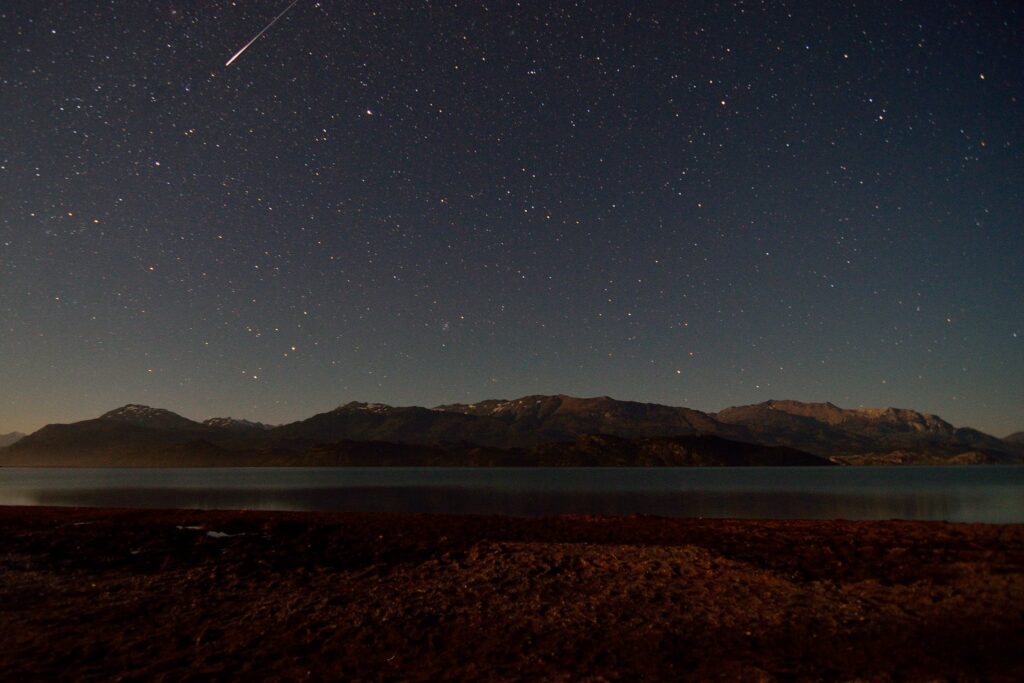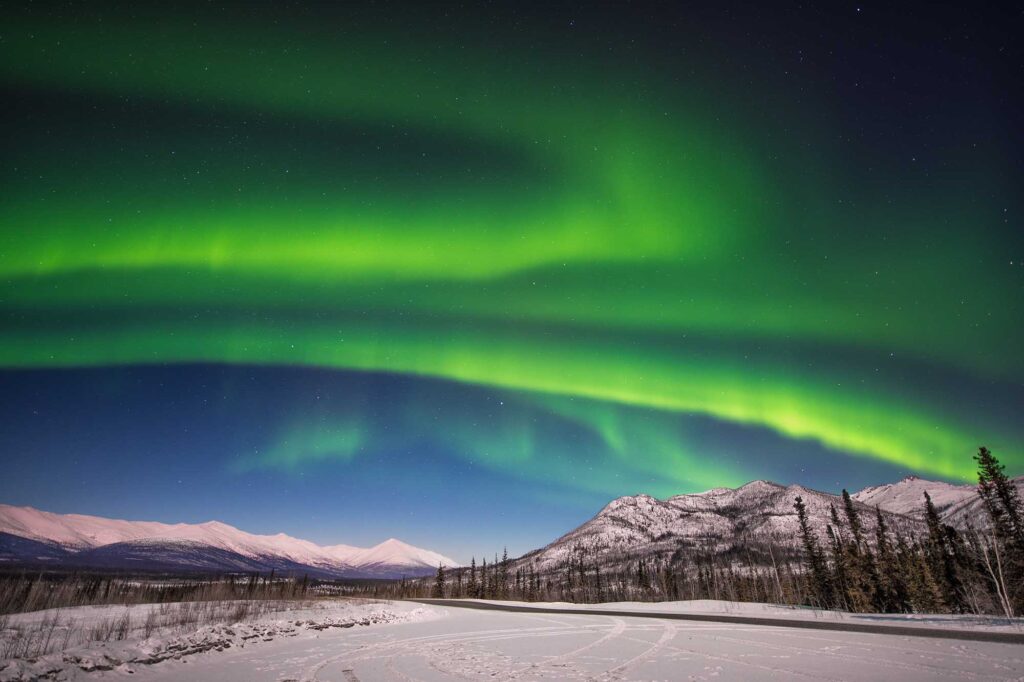As you look up at the sky, the troposphere is crucial in nurturing the clouds above you. But beyond this breathable layer, there are five other important regions to life on Earth.
In the troposphere, jet streams function as aerial superhighways. These fast-flowing air currents, shaped by the planet’s rotation and variance in temperature, dictate much of the transcontinental flight routes and weather patterns. Commercial airliners navigate these corridors.
Within stratospheric calmness, ozone molecules guard – vigilantly absorbing harmful ultraviolet radiation. The elegance of the aurora graces the thermosphere. Here, above the highest clouds, satellites orbit the Earth. Above this is the exosphere, more colloquially known as “outer space.”
Let’s delve deeper into the layers of the atmosphere and explore what lies within each one.
The Troposphere: Earth’s Weather Engine
The troposphere is the atmospheric layer closest to Earth’s surface, where virtually all cloud and weather phenomena occur, and varies in height. It is as little as four miles high at the poles, but up to 12 miles high at the equator. Temperature generally decreases with height in the troposphere, reaching its coldest point at the tropopause, the border between the troposphere and stratosphere.
Temperatures here can be as low as -60°F (-51°C)!
Storms brew and dissipate in this layer, rainbows arc across the sky following rainfall, and trade winds tirelessly journey over oceans.

Climatic Influence and Human Activity
The troposphere is inextricably linked to human activities, influencing weather patterns. The abundant presence of greenhouse gases, primarily from fossil fuel combustion, intensifies global warming and disrupts natural climatic rhythms.
Industrial activity emits carbon dioxide into this atmospheric layer, exacerbating the greenhouse effect.
Urbanization displaces natural landscapes and alters local microclimates. These localized changes, while seemingly minor, can culminate in significant climatic shifts on a global scale.
Agricultural practices modify the troposphere’s chemical composition through methane release and transform the albedo (the ability to trap heat) of the Earth, influencing local weather and longer-term climate trends. Changes in land use, deforestation, and certain crops like rice paddies amplify these effects.
The Stratosphere: Ozone’s Domain
The stratosphere sits above the troposphere and is the protective layer that shelters us from the sun’s harmful ultraviolet radiation, thanks to ozone. Here, commercial jets cruise, leveraging the layer’s relative calm and stability for more efficient travel. The stratosphere is about 4 to 12 miles (6 to 20 kilometers) above the Earth’s surface, closest to the surface at the poles, and ends about 31 miles above us.
Because of heat released by ozone creation due to the sun’s UV rays, temperatures increase with height in this layer. Temperatures at the top of the stratosphere average around 5°F (-15°C).
Unlike the troposphere, weather rarely occurs in the stratosphere, and is typically confined to the lowest layers (the “overshooting tops” of thunderstorms). However, on occasion, noctilucent clouds form here.
Noctilucent clouds, also known as polar mesospheric clouds, appear at high altitudes in the stratosphere, usually during the summer months in polar regions. They are composed of tiny ice crystals that reflect sunlight, creating a stunning display of luminous blue and silver hues against the night sky.
The formation of noctilucent clouds is still not fully understood, adding an air of intrigue to these elusive phenomena. Scientists believe they form when water vapor freezes onto meteoric dust particles high in the atmosphere. The extremely low temperatures in the upper reaches of the stratosphere, combined with the presence of these microscopic particles, create the perfect conditions for their formation.
At cruising altitude, commercial jets slice through the lower stratosphere.
Aeroplanes typically navigate the lower stratosphere, skirting the ozone layer, for optimal flight conditions.
The Mesosphere: Mysteries and Meteors
The mesosphere, the third layer of Earth’s atmosphere, nestles above the stratosphere and is where air temperatures begin to plummet. With an altitude between 31 and 53 miles, while temperatures are somewhat tolerable for humans closer to the surface, at the upper reaches, temperatures fall to -184°F (-120°C).
But this is a good thing, as the thermal characteristics of the mesosphere help in an important planetary job: the disintegration of meteoroids. When we watch a shooting star dash across the night sky, we witness these particles vaporizing in the mesosphere’s increasing temperatures as they descend.

This atmospheric layer remains less explored than others, as it is too high for aircraft and too low for satellites, creating a barrier that challenges direct human observation. However, it shields our planet, incinerating most meteors that dare to enter Earth’s atmosphere.
The Thermosphere: Heating Up
The thermosphere sits between 53 miles (85 km) and 375 miles (600 km) above the Earth’s surface and is a bustling superhighway for human-made satellites.
Here satellites can maintain consistent orbits around the planet. Thanks to the thermosphere’s sparse atmospheric molecules, these satellites encounter less drag, allowing them to move more freely and maintain their velocity with minimal fuel consumption.
The atmosphere begins to thin at this layer, although there is a drastic difference in temperature in this layer (the most of any – thus its name!). While temperatures at the bottom of the thermosphere are as low as -184°F (-120°C), at the top of this layer temperatures can rise above 3,600°F (2,000°C)!

The Majesty of the Aurora
The aurora borealis and aurora australis paint the sky with awe-inspiring beauty, visible primarily from the high latitudes. They typically occur in the lowest reaches of the thermosphere. Best witnessed in the polar regions, these natural phenomena are a spectacular collision of particles and atmospheric gases.
Where does ‘outer space’ begin?
The demarcation between atmosphere and space isn’t a clear boundary but a gradual fade into the cosmos. Most current definitions place this somewhere in the thermosphere.
Kármán Line: Roughly 62 miles (100 km) above Earth, the Kármán Line is internationally recognized as the edge of space. Aerodynamicist Theodore von Kármán calculated where the atmosphere becomes too thin to support aeronautical flight. The Fédération Aéronautique Internationale uses the Kármán Line to define astronautics vs. aeronautics regions. Above this altitude, spacecraft are subject to international space law rather than aviation rules.
Theodore von Kármán did excellent work: In 2009, scientists reported that a Supra-Thermal Ion Imager (an instrument that measures the direction and speed of ions), allowed them to establish a boundary at 118 km (73.3 mi) above Earth, very close to Theodore von Kármán’s calculations.
The Exosphere: Welcome to Outer Space
Perched atop Earth’s atmospheric layers, the exosphere is where air gradually gives way to the void of space. Thinly scattered hydrogen and helium atoms whisper the transition from the air we breathe to the cosmic emptiness.
Few air molecules exist in this sparse region, dodging satellites as they orbit.
Here, the boundary between the atmosphere and outer space becomes indistinct. At the exosphere’s outer limit, gases escape Earth’s grasp, bleeding slowly into the void of interplanetary space.
The exosphere stretches to 6,200 miles (10,000 kilometers) above us, vanishing into the celestial ocean. Here, the term “air” loses its traditional significance as we tiptoe into the expanses of space.


